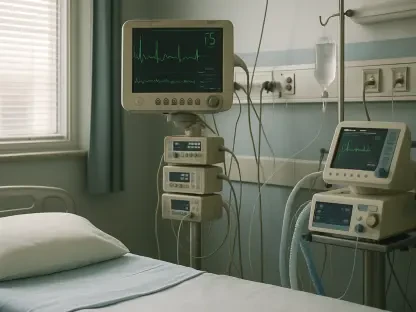The healthcare landscape at Long Beach MemorialCare, encompassing both Long Beach Medical Center and Miller Children’s and Women’s Hospital, stands at a crossroads as nurses initiate their first strike in fifteen years. This unprecedented labor action raises critical questions about the future of healthcare dynamics, employee rights, and the balance between financial constraints and optimal patient care standards. The strike is fueled by longstanding grievances related to worker safety, staffing ratios, and the ongoing economic challenges faced by the institution. Nurses, represented by the California Nurses Association, demand significant improvements, underscoring a tense standoff with hospital management over issues deeply affecting their professional environment and patient care.
Unraveling the Narrative of Healthcare Worker Demands
Security Concerns and Staff Safety
Security at healthcare facilities has emerged as a pressing concern, intensified by past incidents of violence, such as a tragic shooting in 2009. Nurses are voicing urgent calls for enhanced security measures to safeguard their wellbeing and that of their patients. They highlight experiences dealing with armed individuals on the premises, fostering a sense of vulnerability. While management has committed to the installation of weapons detectors by January 2027, this promise falls short for those advocating immediate action. Nurses argue that these critical interventions cannot wait, pressing for immediate changes that could prevent future incidents and provide a safe working environment. This aspect of the strike underscores the stark realities healthcare workers face, potentially reshaping hospital security policies to preemptively address concerns rather than reactively.
Staffing Ratios and Patient Care
At the core of the nurses’ demands is the issue of nurse-to-patient ratios, a crucial factor in delivering high-quality patient care. This theme resonates with broader healthcare trends where adequate staffing is pivotal in ensuring positive patient outcomes. Nurses assert that insufficient staffing not only jeopardizes patient safety but exacerbates healthcare worker fatigue, leading to burnout and attrition. They express concerns about the practice of deploying “floating” nurses—those reassigned to departments outside their specialty—as a band-aid solution that inadequately addresses the root issue. This approach, they argue, risks compromising patient care if staff lack specialized training for specific patient groups, as evidenced by situations where neonatal-trained nurses attended to adolescent asthma patients. Resolving these staffing challenges remains a decisive factor in determining the quality of care provided and the sustainability of workforce morale.
Financial Struggles and Logistical Realities
Economic Pressures on Management
Long Beach MemorialCare is currently navigating significant financial hurdles, with a reported $40 million shortfall looming large. The resultant fiscal strain has already led to the unsettling layoff of 175 staff members, including nurses, in recent months. This economic reality poses a formidable challenge in meeting the nurses’ demands for improved working conditions. Management views the strike as exacerbating their financial woes, detracting from their capacity to offer competitive wages and enhance benefits. Interim CEO Frank Bierne expresses concern that the labor action hampers efforts to reconcile financial constraints with staff demands, framing the strike as counterproductive to constructive dialogue. This assertion highlights the complex dynamic between fiscal management and the pressing need to maintain a satisfied and adequately compensated workforce, testing the resilience of healthcare administrators in balancing these often divergent needs.
Understanding the Trust Deficit
The current standoff is further complicated by perceived discrepancies in commitment between management and nurses. Hospital leaders, like Vice President of Human Resources Abbey Herrera-Williams, affirm their dedication to resolving disputes and bringing healthcare professionals back to the forefront of patient care. Yet, nurses remain skeptical, pointing to unmet safety expectations and unsustainable workloads as evidence of management’s inadequacies. This trust deficit illuminates the broader issues plaguing healthcare labor relations, where communication gaps and differing perceptions of reality create barriers to potential resolutions. The ability to bridge this divide and foster a mutually beneficial relationship will be pivotal in navigating the current crisis and preventing future conflicts within the industry. Establishing transparent communication and demonstrating concrete improvements are steps toward rebuilding trust in this healthcare system.
Implications for Healthcare and Beyond
The Role of Political and Public Support
The unfolding strike at Long Beach MemorialCare has garnered significant attention, extending beyond the immediate parties involved and resonating with the wider community and local government. Political figures, such as Mayor Rex Richardson, have joined the picket line, lending visibility and legitimacy to the nurses’ cause. Such interventions highlight the political and social dimensions of labor disputes, demonstrating their far-reaching implications on public perceptions of healthcare institutions. The added layer of political involvement underscores how labor actions can shape community sentiments and potentially influence policy considerations at the local and state levels. The resolution of these disputes could serve as a bellwether for similar labor relations in critical sectors like healthcare, impacting legislative priorities and driving systemic change.
Labor Relations and Healthcare Dynamics
Long Beach MemorialCare’s healthcare landscape, which includes Long Beach Medical Center and Miller Children’s and Women’s Hospital, is encountering a pivotal moment with its first nurse strike in fifteen years. This strike is not only a rare occurrence but also highlights pressing issues surrounding healthcare dynamics, employee rights, and the challenge of balancing financial constraints while maintaining high patient care standards. The impetus for the strike stems from festering issues concerning worker safety, staffing ratios, and the continuous financial hurdles the institution faces. Represented by the California Nurses Association, nurses are calling for substantial reforms, as they stand firm against hospital management to address matters profoundly impacting their working conditions and the quality of patient care. This standoff underscores a critical turning point for both hospital administration and its nursing staff as they negotiate the path forward to achieve sustainable solutions and improved conditions.









